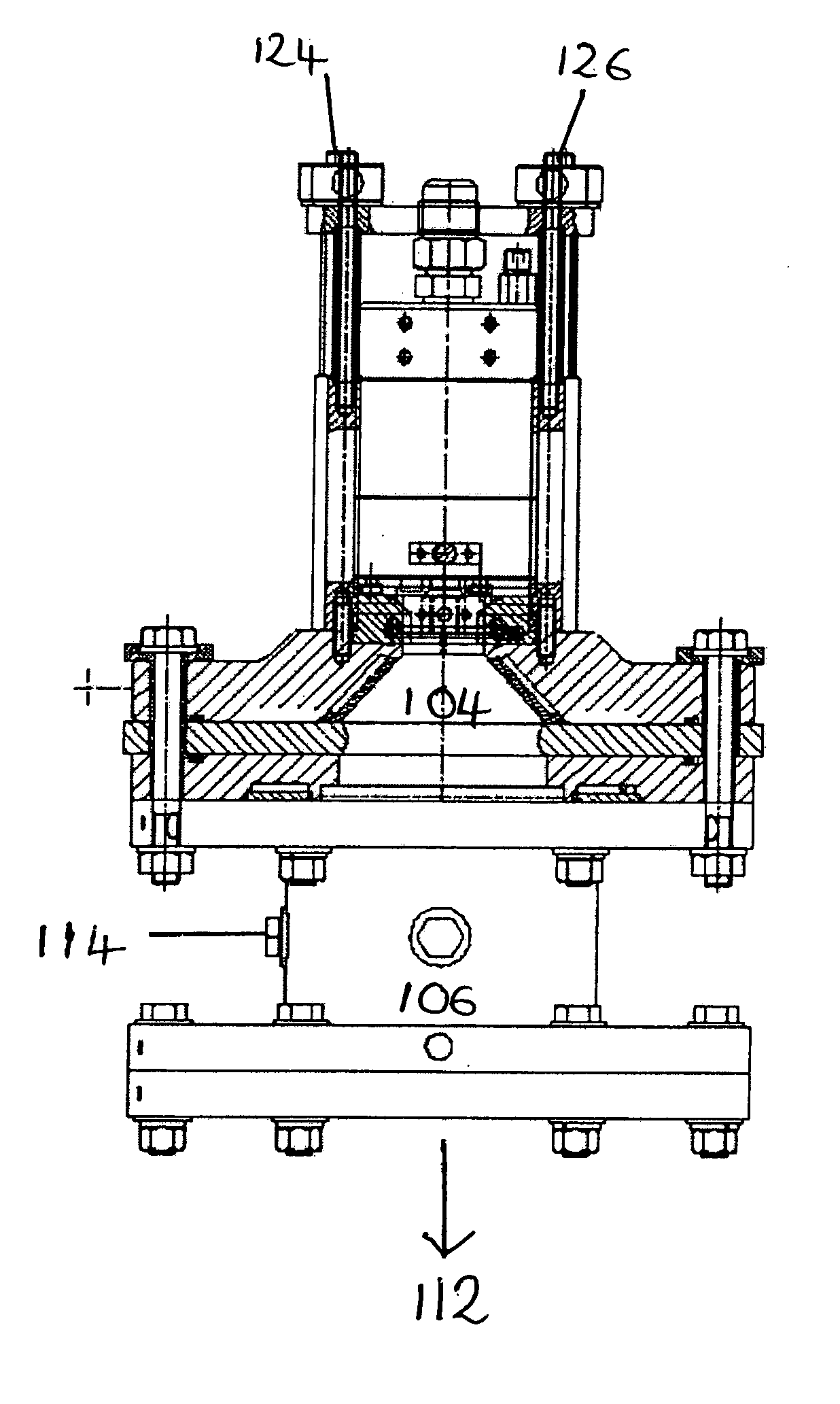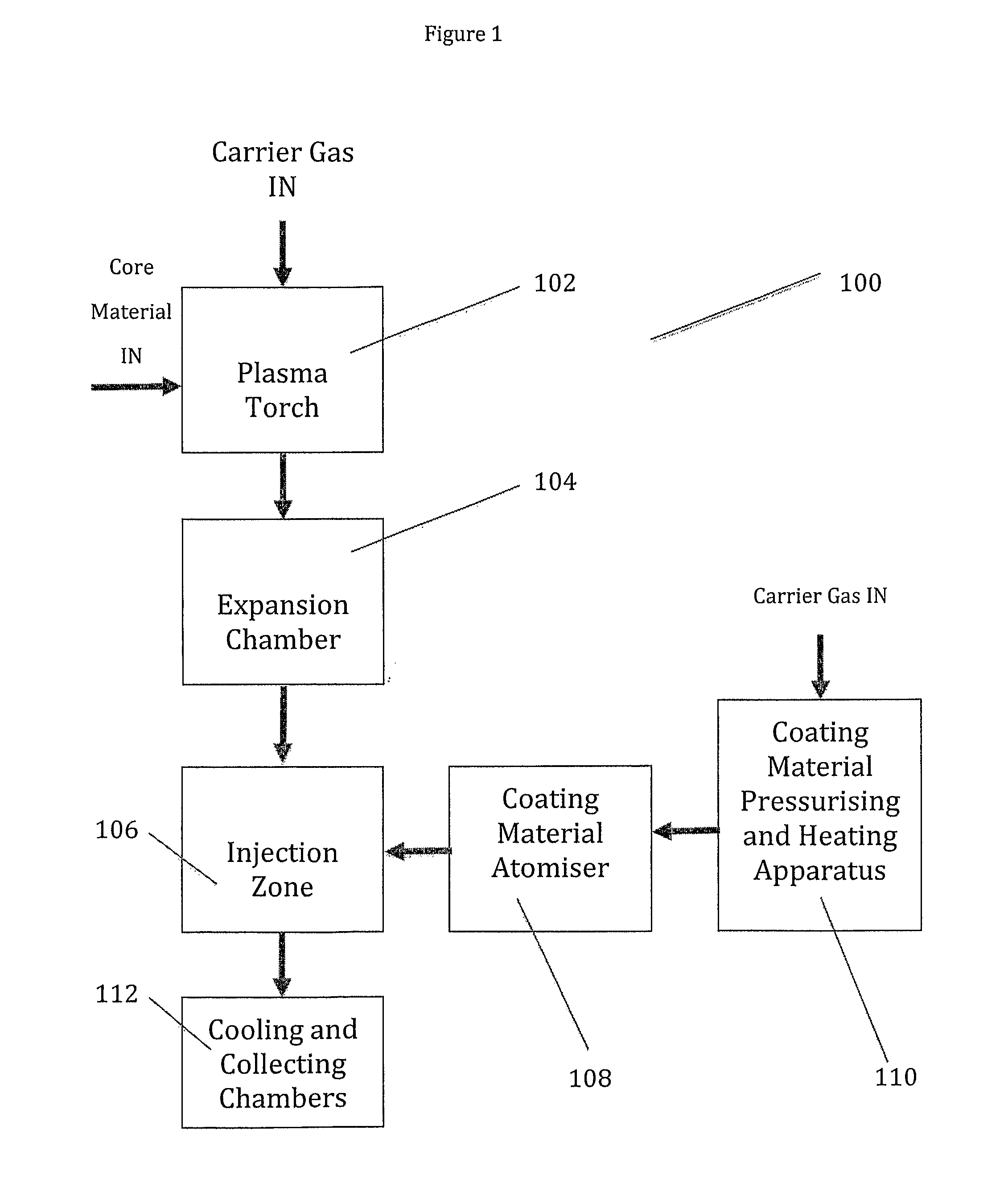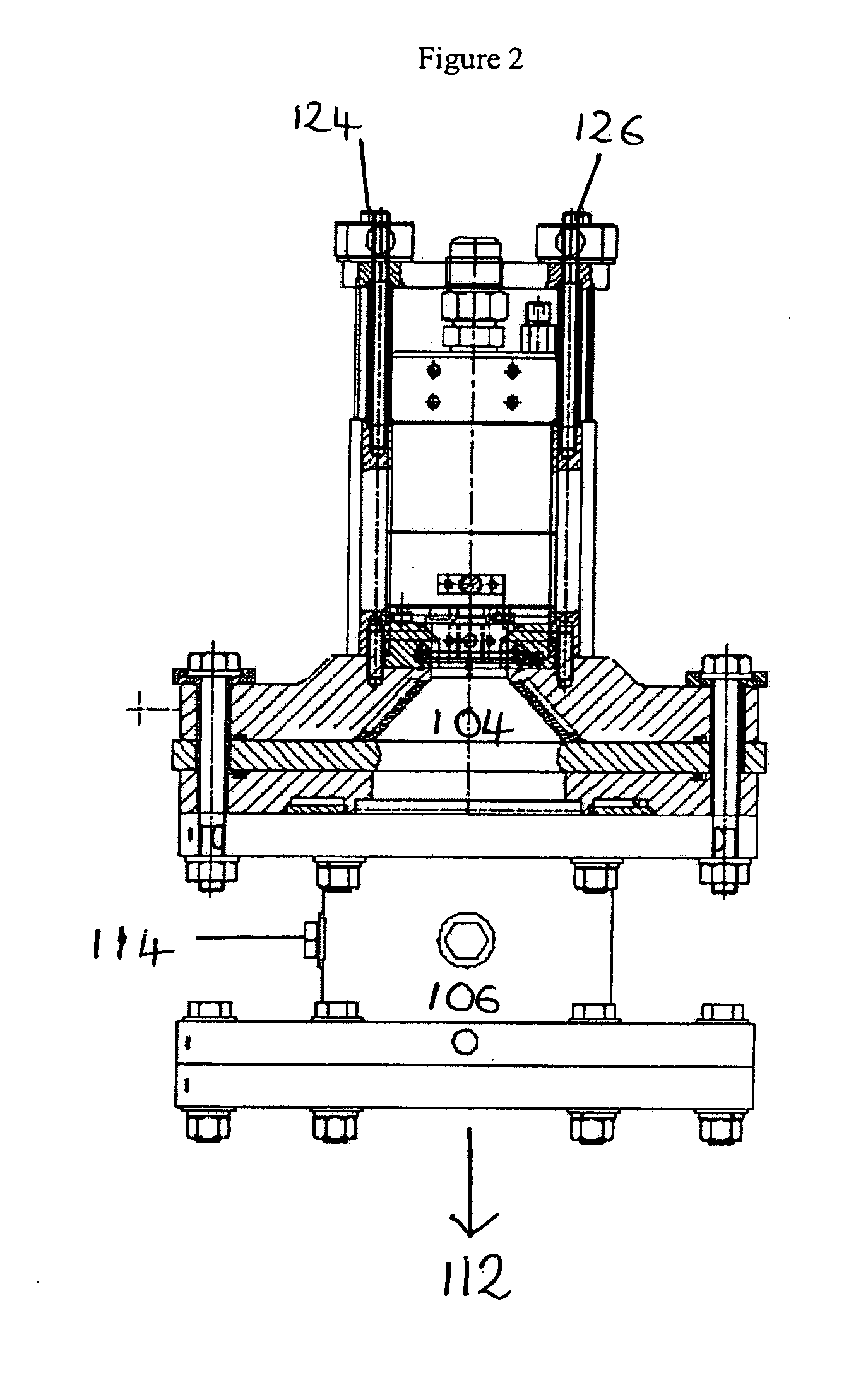Fine particles
- Summary
- Abstract
- Description
- Claims
- Application Information
AI Technical Summary
Benefits of technology
Problems solved by technology
Method used
Image
Examples
example 1
Synthesis of Fine Particles Using Injection Techniques
[0118]Powdered copper was injected into the apparatus of FIG. 1 through an alumina ring.
[0119]Oleic acid was warmed to about 50° C. and injected into the apparatus in a stream of argon. Heating the oleic acid reduced its viscosity. The acid was injected into the plasma stream at a flow rate of 25 ml / minute just above the quench ring, where the temperature was high enough to vaporise the acid, but low enough that decomposition would not occur.
[0120]After collection of the fine particles the reactor was cooled and inspected. This inspection showed that clean vaporisation of the core material had occurred and that there was no deposition of the core material on the walls of the chamber. This was attributed to the powder injection through the alumina ring. Whilst some deposition of the fine particles was observed on the filter elements, this could be removed and recovered using water or isopropanol. The recovery of agglomerated or si...
example 2
Characterisation of the Fine Particles of FIG. 1
[0122]SEM and STEM images were recorded for copper fine particles produced using the apparatus of FIG. 1 with and without an oleic acid coating.
[0123]In SEM an electron beam scans a surface and reproduces the image measured at the detector (for back-scattered (elastic) or secondary electrons, also X-rays which can give chemical mapping of the surface) onto a screen scanned in the same manner, to give a surface image at higher magnification than is possible using the frequency of light. STEM is a modification of SEM, where the apparatus is fitted with a second detector below the sample stage so that it may also be used to collect and detect electrons that pass through the sample, making it a Transmission Electron Microscope (TEM) for such samples as are sufficiently thin or which pose low resistance to the electrons for any to pass through to the detector.
[0124]The images with the coating (FIGS. 6 to 10) show copper nanoparticles which ...
example 3
Protection of Core Material from Oxidation
[0126]Two XRD spectra were run on a copper core coated with oleic acid. These are shown in FIG. 14 (day 0—black, day 30—grey). As can be seen, the oxidation of the copper is negligible as the height of the Cu(0) peak has not varied. Accordingly, the oleic acid coating has protected the copper core from oxidation.
[0127]FIG. 15 shows two XRD spectra run on a copper core coated with PVP (day 0—black, day 30—grey). As with the oleic acid core above, the height of the Cu(0) peak has not varied, and hence the copper core has been protected from oxidation by the PVP coating.
PUM
| Property | Measurement | Unit |
|---|---|---|
| Diameter | aaaaa | aaaaa |
| Temperature | aaaaa | aaaaa |
| Pressure | aaaaa | aaaaa |
Abstract
Description
Claims
Application Information
 Login to View More
Login to View More - Generate Ideas
- Intellectual Property
- Life Sciences
- Materials
- Tech Scout
- Unparalleled Data Quality
- Higher Quality Content
- 60% Fewer Hallucinations
Browse by: Latest US Patents, China's latest patents, Technical Efficacy Thesaurus, Application Domain, Technology Topic, Popular Technical Reports.
© 2025 PatSnap. All rights reserved.Legal|Privacy policy|Modern Slavery Act Transparency Statement|Sitemap|About US| Contact US: help@patsnap.com



